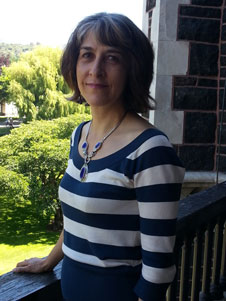
Dr Katharina Ruckstuhl.
Becoming more specific about the numbers of new Te Reo Māori speakers needed to turn around a decline of the language is at the heart of new University of Otago research.
Dr Katharina Ruckstuhl and colleague Dr Janine Wright, formerly of Mathematics and Statistics, have completed initial research into a new statistical algorithm that will allow a future prediction of the specific number of people needed to begin using Te Reo each year to halt the decline of the language.
“I became interested in this after learning of a Welsh study in which a statistician looked at data on Welsh, or Gaelic, speakers,” Dr Ruckstuhl says.
That research used historical data to paint a future picture.
“By looking at the data, they could also look forward, so you could say to policy makers just how many more people speaking Welsh could improve the statistics around the language.
“Our first piece of research built a mathematical model and our second piece of research aimed to apply our model to the New Zealand situation.
"Our research might help such goals by being able to say, for example, we need 11 more speakers in this region each year."
“Now we are seeking funding to complete testing of the model and broaden the research.
“My iwi, Ngāi Tahu, has a plan to have 1000 Ngāi Tahu Te Reo speaking homes by 2025. That's a big number. Our research might help such goals by being able to say, for example, we need 11 more speakers in this region each year. That feels more manageable, more personal.”
Dr Ruckstuhl has teamed up with Associate Professors Brendan McCane and Poia Rewi to extend the initial research and to, potentially, create a website to show people how their choices – choices about a school for their children, or how much they use te reo at home, or how much they watch Māori television – will affect the future of the language.
